News Articles
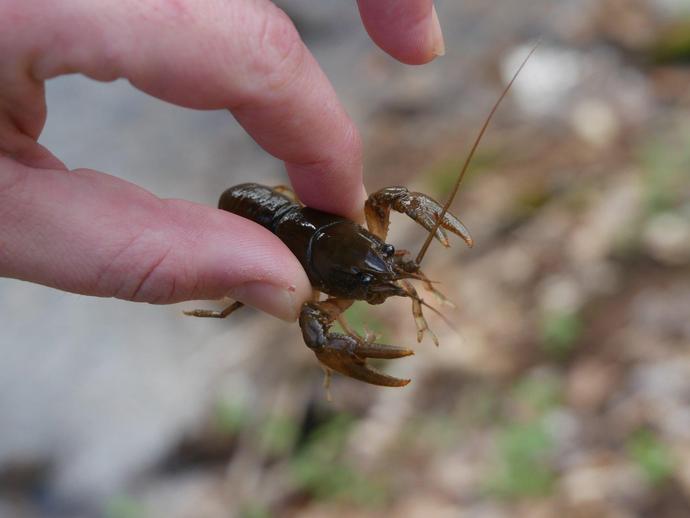
It's day three of Aquatic Week!
March 31, 2020
It's day three of Aquatic Week! These little guys go by many names: crayfish, crawfish, crawdads, and mud bugs, just to name a few. There are three different families of crayfish, but the southeastern United States boasts more crayfish diversity than anywhere else in the world, all belonging to the family Cambaridae, which contains more than 330 species spread across nine genera. I had initially hoped to identify the pictured crayfish down to genus, but as it turns out, poking around the internet looking at taxonomic keys for a couple of hours is no replacement for a Ph.D. in biology. Who could have guessed? Crayfish are pretty interesting animals. The vast majority of crayfish live in freshwater, although a few species ...
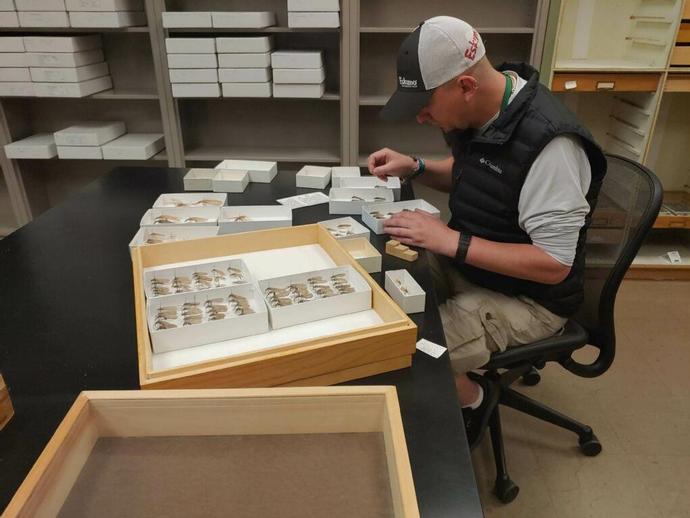
While most museum staff are presently teleworking ...
March 31, 2020
While most museum staff are presently teleworking, some jobs require a physical presence at the museum. Dr. Kal Ivanov, associate curator of recent invertebrates, and Liberty Hightower, research technician, are working with the museum's bug collection today. To practice proper social distancing, Dr. Ivanov is working in his lab, while Liberty is working in the dry biology collections. Dr. Ivanov is currently incorporating Megaloptera (alderflies, fish flies, and dobsonflies) specimens back into VMNHs collections, which had been on display inside the Wild Watersheds exhibit that is currently being updated. Liberty is inside the dry biology collections adding backlogged Curculionoidea (weevils and allies) specimens to the ...

In accordance with Executive Order 55 issued by Governor Northam today and to help limit the ...
March 30, 2020
In accordance with Executive Order 55 issued by Governor Northam today and to help limit the spread of COVID-19, the museum will be closed to the public through June 10, 2020. All programs and events scheduled to take place now through June 10, 2020 have been canceled or postponed. Thank you for your understanding.
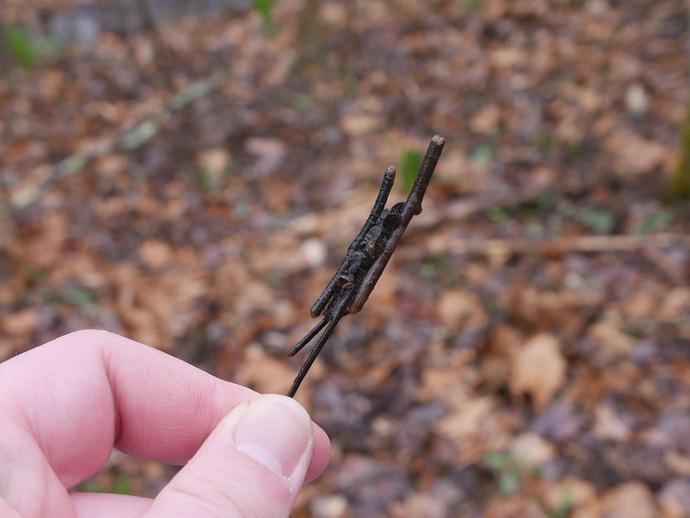
Welcome to day two of Aquatic Week!
March 30, 2020
Welcome to day two of Aquatic Week! This week, we're highlighting the various critters that you can find in creeks and ponds in southwest Virginia. At first glance, these photos might look like I just found some twigs that got stuck together ... and that's exactly what the caddisfly wants you to think. Caddisflies (order Trichoptera) are a large group of insects that spend their larval stage underwater. As adults they resemble small moths, and with good reason; they're closely related to moths and butterflies. The adults are also known as "sedgeflies," and most fly fishermen probably have a few flies in their tackle box designed to resemble adult caddisflies. Within the order Trichoptera, there are two suborders: ...
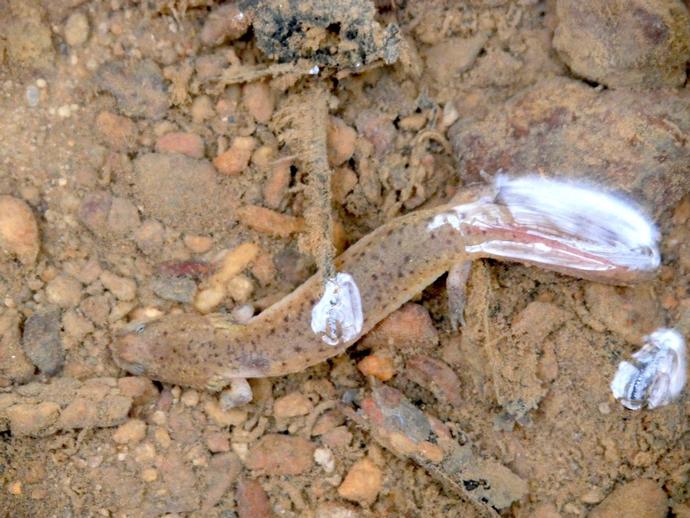
Welcome to Aquatic Week!
March 29, 2020
Welcome to Aquatic Week! After having some success spotting aquatic critters while wading through the creeks near my house, I decided to do a theme week. From today through Saturday, every nature update will be about something you can find in the streams and ponds of southwest Virginia! Many folks know that frogs (or at least a lot of species of frogs) don't emerge from their eggs fully-formed. Instead, they go through a larval stage, swimming around ponds and puddles as legless tadpoles. Salamanders, which are amphibians like frogs and toads, have a similar stage in their lives. Unlike tadpoles, larval salamanders have legs. They also have laterally flattened paddle-like tails to help them swim through the water and ...
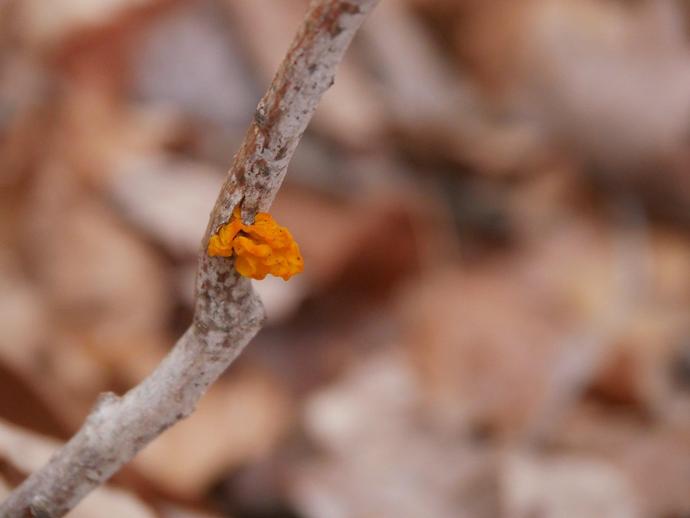
When I was a little kid ...
March 28, 2020
When I was a little kid, I was always on the hunt for A Good Stick, which all little kids are able to easily identify. A Good Stick is one that is more or less straight and has enough structural integrity to poke any number of things without breaking. Often, I would find a stick that didn't pass muster, usually because it was rotting and crumbling apart. These reject sticks often had this weird yellow-orange fungus growing out of them, and I always wondered what it was. As it turns out, this is Tremella mesenterica, a common jelly fungus also known as yellow brain, yellow trembler or witches' butter. It's found on dead tree branches, and it's a parasitic fungus; however, it is not a parasite of the tree itself! It's actually ...
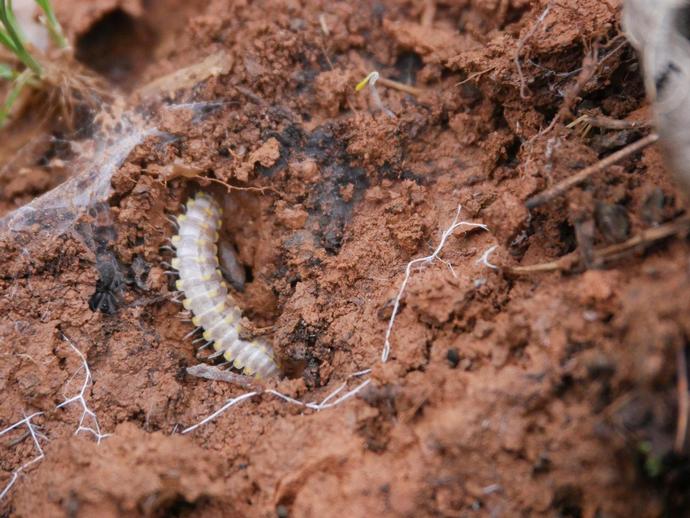
Yesterday ...
March 27, 2020
Yesterday, we talked about centipedes; today, we're going to talk about millipedes, the centipede's cool laid-back vegan cousin. According to myriapod expert Dr. Jackson Means, who is currently serving as a research technician at VMNH, this millipede is likely a juvenile Boraria stricta; once mature, it will have a dark black body with yellow spots to advertise its chemical defenses (this form of advertising is called "aposematism"). Those chemical defenses are no joke. If you ever pick up a similarly-colored millipede and smell it (look, we've all done it, there's no shame in it) you might notice that it smells a bit like almonds or cherries. That delicious aroma is created when the millipede releases hydrogen cyanide! ...
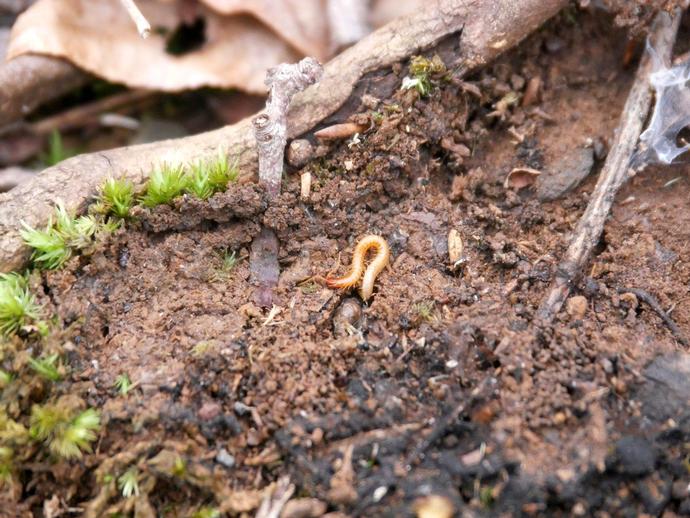
Centipedes aren't the most beloved creatures, but they're pretty fascinating
March 26, 2020
Centipedes aren't the most beloved creatures, but they're pretty fascinating. This is a bark centipede of the genus Scolopocryptops. So what's the difference between a centipede and a millipede? Centipedes and millipedes both belong to the subphylum Myriapoda, and they're both long and skinny and have a bunch of legs, but beyond that, the differences are night and day. Centipedes are fast-moving carnivores; millipedes are slow-moving detritivores (they eat dead organic material, mostly plant-based). Centipedes can inflict a painful, venomous bite; millipedes defend themselves by curling into a tight ball, and some species release a foul-smelling liquid. I found this particular centipede hiding underneath a rock out in the ...
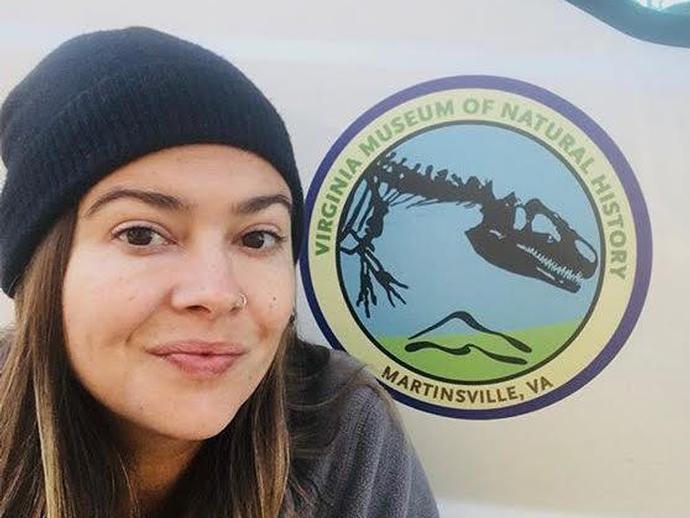
Congratulations to Lucy Treado, who was named Paleontology Research Technician today!
March 25, 2020
Congratulations to Lucy Treado, who was named Paleontology Research Technician today! Lucy has been with the museum since September 2015 and has served VMNH in a number of areas, including archaeology, exhibits, and - of course - paleontology. In her new role, Lucy will provide laboratory and field assistance to the paleontology department, assist in fossil preparation, collections care, and record keeping, as well as maintain the paleontology lab and its specialized equipment. Congrats, Lucy!
Dr
March 25, 2020
Dr. Adam Pritchard, assistant curator of paleontology, may be hunkered down in his home for the time being, but he's still determined to bring the wonders and knowledge of paleontology to VMNH audiences! "Tales of Ancient Life" is a series of videos in which Dr. Pritchard will be exploring fossils from the VMNH collections, how they fit into our world, and the whole of the history of the fossil record.
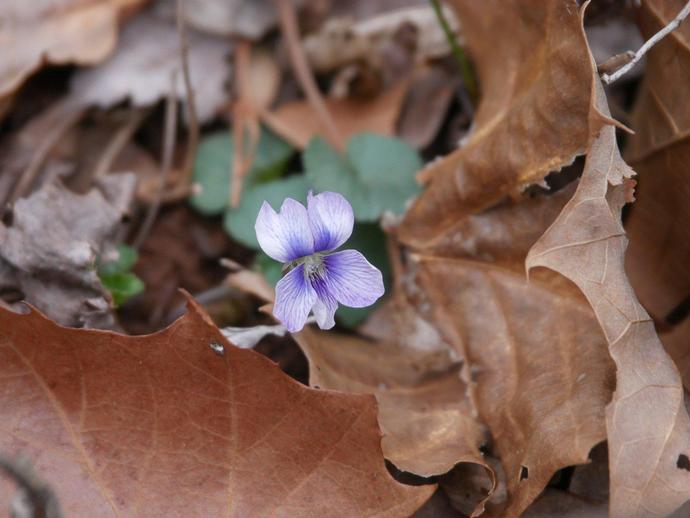
These tiny flowers often pop up in yards, and a lot of people even spritz them with weed killer
March 25, 2020
These tiny flowers often pop up in yards, and a lot of people even spritz them with weed killer. Many of those same people then go out and buy close relatives of this plant to decorate their flower beds. This is Viola sororia, better known as the common blue violet, wood violet, or wild violet. You might think that these are closely related to African violets; in fact, African violets belong to a different genus altogether! The most beloved members of the Viola genus are that perennial favorite, the pansy. Pansies were created by hybridizing specific plants within the genus Viola, and that careful hybridization is what gives us the wide variety of flower colors we enjoy today. While common violets might not be as showy, they ...
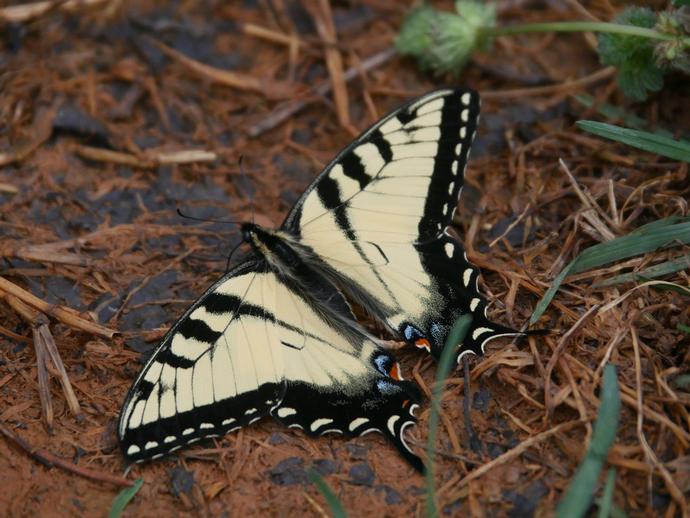
The eastern tiger swallowtail butterfly (Papilio glaucus) is one of the most recognizable ...
March 24, 2020
The eastern tiger swallowtail butterfly (Papilio glaucus) is one of the most recognizable butterflies in the eastern U.S. They can be spotted from spring through fall, during which time they can produce as many as three broods. While the adults may be beautiful to witness, the young caterpillars don't exactly inspire poetry; for their first few instars (phases between molts in the development of insect larva) they resemble bird droppings, which helps them avoid the attention of predators. As the caterpillars grow larger, they develop fake eye spots that ward off predators. Swallowtail butterfly caterpillars also possess an interesting organ called an "osmeterium." This organ looks a bit like fleshy orange antennae, and it's ...
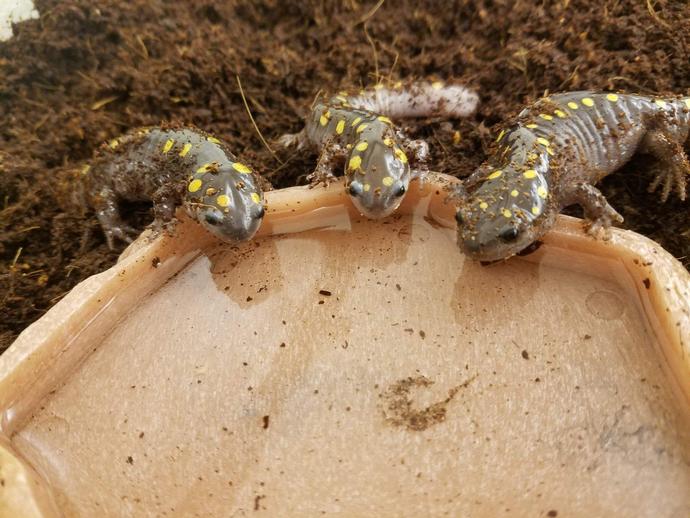
Even cockroaches need to eat!
March 23, 2020
Even cockroaches need to eat! While most VMNH employees are teleworking at this time, some jobs require staff to have a physical presence at the museum, such as those caring for the museum's live animals. Here are a few pics of some of the animals that were very happy to get some grub and fresh water today.
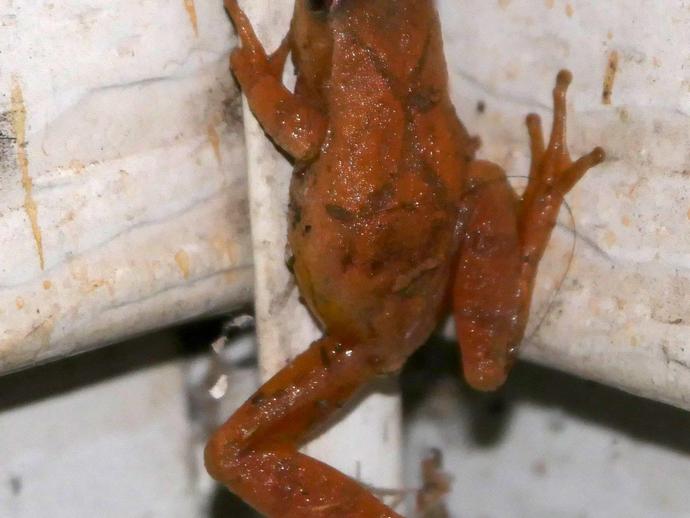
Have you ever walked past a pond or a swamp at night during the spring and heard a high-pitched ...
March 23, 2020
Have you ever walked past a pond or a swamp at night during the spring and heard a high-pitched peeping sound coming from about a million different sources? What you heard was the appropriately-named spring peeper (Psuedacris crucifer). These little guys (they can grow a hair over an inch long) are chorus frogs that breed during the early spring, and they're among the very first frogs that begin calling when the weather starts to turn warm. They prefer to live in the woods near bodies of water, and they emerge at night to hunt for insects (and in this case, hang out on my back porch). The genus name "Psuedacris" means "false locust," while the species name "crucifer" is derived from the Latin for "cross-bearing." This is ...
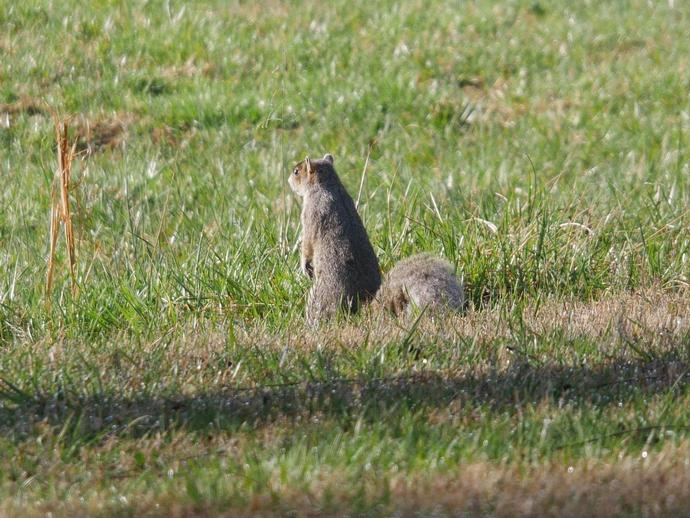
A fox squirrel stares into the distance ...
March 22, 2020
A fox squirrel stares into the distance, quietly contemplating the big questions: do I live to gather walnuts, or do I gather walnuts to live? The fox squirrel (Sciurus niger) is the largest species of tree squirrel in North America. While they can look similar to gray squirrels, they are slightly larger and have longer tails. They also exhibit a wider variety of coat colors, and they often have a white spot on the tips of their noses. While I've been seeing fox squirrels in Patrick County for years, they have only recently started cropping up in Henry County; if you have a keen eye, you might just spot one or two in the vicinity of Patrick Henry Community College. They are most often found in open stands of forest with ...
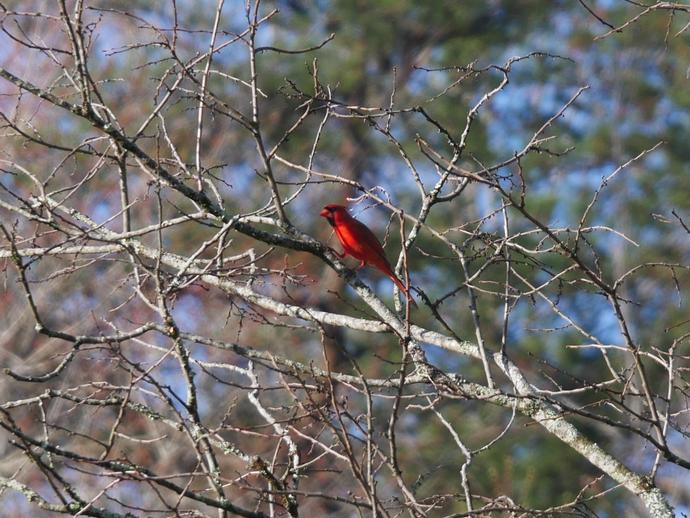
The male Northern Cardinal isn't exactly a rare bird, but it's still an eye-catching sight
March 21, 2020
The male Northern Cardinal isn't exactly a rare bird, but it's still an eye-catching sight. Cardinals can be found as far north as southeastern Canada, as far south as Guatemala, and as far west as Texas. Males are a vibrant red while females are an olive color. Every so often, people spot yellow cardinals; these rare birds lack the enzyme that converts carotenoids (organic pigments found in plants) into red plumage. You probably know that the cardinal is the state bird of Virginia, but did you know that it's also the state bird of North Carolina, West Virginia, Ohio, Kentucky, Illinois, and Indiana? No other bird can claim to be the state bird of that many states. If you'd like to attract cardinals to your bird feeder, ...
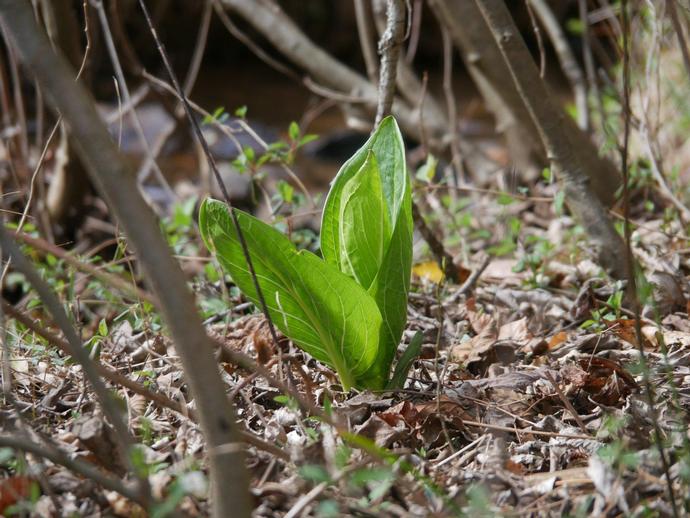
Hey everybody, it's a skunk cabbage! (Look, they can't all be cool salamanders)
March 20, 2020
Hey everybody, it's a skunk cabbage! (Look, they can't all be cool salamanders). Symplocarpus foetidus, commonly known as skunk cabbage or swamp cabbage, is a pretty interesting plant. It can be found from Nova Scotia all the way down to North Carolina and Tennessee (while it's pretty common in southside Virginia, it's actually considered endangered in Tennessee). If you break the leaf of a skunk cabbage, you'll quickly understand how it earned its name; it releases a pungent odor, and it also releases a foul smell when it blooms. This stench attracts its pollinators, which include scavenging flies, stoneflies and bees. Perhaps the most interesting aspect of skunk cabbage is that it's a thermogenic plant, meaning it can ...
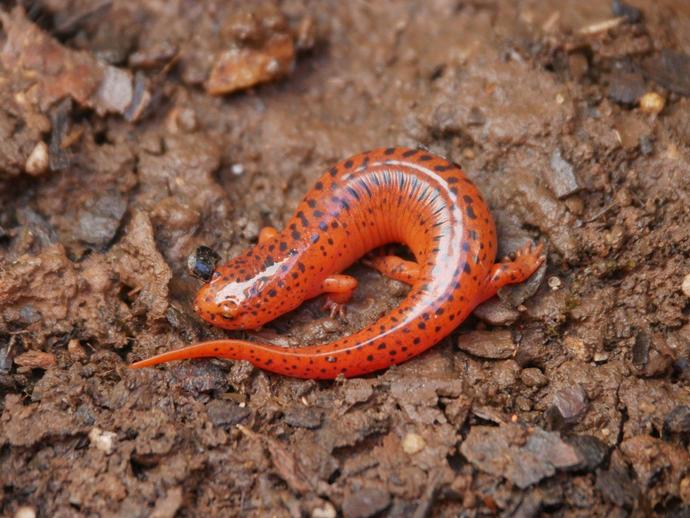
Ben here!
March 19, 2020
Ben here! This morning, I looked underneath a potted plant in my yard and found this little fellow: a Northern red salamander (Psuedotriton ruber ruber). "Psuedotriton" is Latin for "False Triton," referring to the Greek sea god, which seems vaguely insulting to this awesome salamander. The Northern red salamander is the official state salamander of Virginia and they average 4-6 inches in length. Salamanders are amphibians just like frogs and toads, and this particular species is one of the lungless salamanders, which means it respires through its skin. For this reason, you should never touch a salamander if you find one. As tempting as it is to pick this little guy up and carry him around all day, the salts and oils on our ...
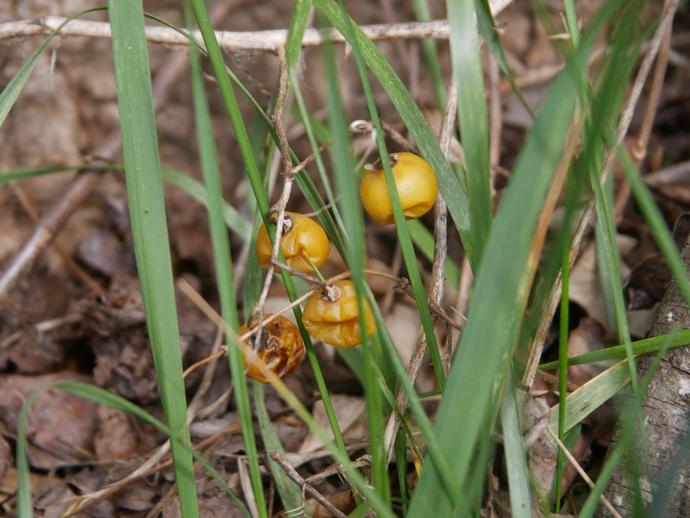
Administrator of Science Ben Williams here ...
March 18, 2020
Administrator of Science Ben Williams here, checking in from the woods with another nature picture! You've probably seen these before, and if you're like me, you referred to them as "those weird little yellow tomato-looking things." As it turns out, that's not too far from the truth! This is Solanum carolinense, better known as the Carolina horsenettle. However, it is not a true nettle (nor is it a horse). It's a member of the nightshade family, which also includes tomatoes, potatoes, and eggplant among many, many others. Don't eat the fruit of a Carolina horsenettle, though; the fruits contain toxic alkaloids that are not safe for human consumption. Skunks, wild turkeys, bobwhites and pheasants love to eat the fruit, ...
RICHMOND—Governor Ralph Northam and State Health Commissioner M
March 18, 2020
RICHMOND—Governor Ralph Northam and State Health Commissioner M. Norman Oliver, MD, MA today issued a public health emergency order prohibiting more than 10 patrons in restaurants, fitness centers, and theaters. The order gives local and state law enforcement the ability to enforce this ban, which was announced by the Governor earlier today, if needed. "I hope that everyone will have the common sense to stay home tonight and in the days ahead," said Governor Northam. "This order will ensure that state and local officials have the tools they need to keep people safe."
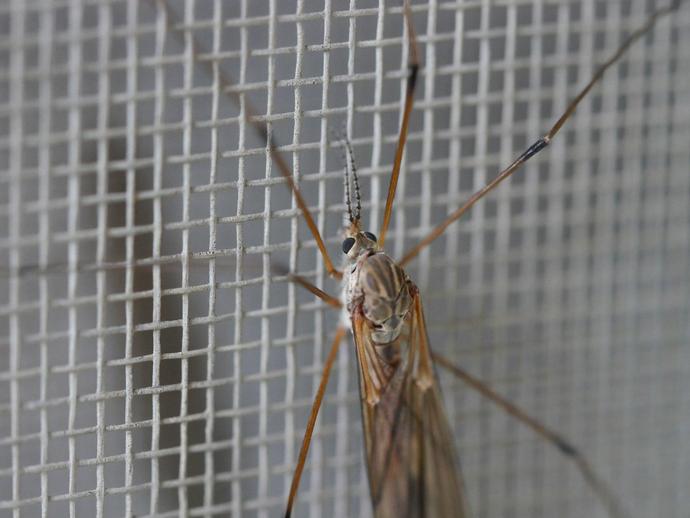
Social distancing can be difficult ...
March 17, 2020
Social distancing can be difficult, but the next few weeks present a great opportunity to become reacquainted with nature! While he is working from home, Administrator of Science Ben Williams will venture outdoors each day to record a snapshot of the unique sights that can be found in the natural world. GAH! What is that? This is a macro shot of a crane fly (flies in the family Tipulidae). These flies look like giant mosquitoes, but have no fear; they're perfectly harmless. The adults only eat flower nectar. In addition to their mosquito-like appearance, crane flies can be easily spotted based on their clumsy, wobbly flight. They spend most of their lives as worm-like larvae popularly called "leatherjackets." These larvae ...

MUSEUM NOW CLOSED TO VISITORS The Virginia Museum of Natural History is currently closed to ...
March 16, 2020
MUSEUM NOW CLOSED TO VISITORS The Virginia Museum of Natural History is currently closed to visitors as a precautionary measure against the spread of COVID-19 (coronavirus). We will continue to monitor the situation to determine a date to re-open to visitors. As previously announced, all programs and events through March 31, 2020 have been canceled or postponed indefinitely. Any additional cancellations, postponements and schedule changes will be announced on the museum's Facebook page and on the museum's website at www.vmnh.net/visit. We greatly appreciate your understanding.
The museum is open today on a regular schedule
March 14, 2020
The museum is open today on a regular schedule. Events and programs now through March 31, 2020 have been cancelled or postponed. We are closely monitoring the developments regarding COVID-19 and we will announce any additional postponements, cancellations, and/or changes in hours of operation here on the museum's Facebook page and official VMNH website. Thank you for your understanding!

Dear Friends and Supporters of VMNH ...
March 13, 2020
Dear Friends and Supporters of VMNH, The Virginia Museum of Natural History is closely monitoring the developments regarding COVID-19 (coronavirus) and we are committed to responding to them as quickly as possible. As a state agency, we are following the recommendations provided by the Commonwealth of Virginia and the U.S. Centers for Disease Control and Prevention to guide our response. With the health and well-being of our visitors, volunteers, and staff in mind, we have determined that the prudent course of action is to cancel or postpone all events and programs through March 31, 2020. We will continue to assess the situation and determine whether additional cancellations and/or postponements will be necessary. As a ...

Dear Friends and Supporters of VMNH ...
March 12, 2020
Dear Friends and Supporters of VMNH, The Virginia Museum of Natural History's highest priority will always be the well-being of our visitors, volunteers, and staff. We are closely monitoring the developments regarding COVID-19 and we are committed to responding to them as quickly as possible. As an agency of the Commonwealth, we are following the recommendations provided by the Commonwealth of Virginia and the U.S. Centers for Disease Control and Prevention. At this time, the museum will remain open during regular hours. Any changes to our schedule will be announced on the museum's website (www.vmnh.net), Facebook page (www.facebook.com/VirginiaMuseum), as well as Twitter (www.twitter.com/VMNH). We are also currently ...
CANCELED: Tonight's 2nd Thursday Science Talk featuring Dr
March 12, 2020
CANCELED: Tonight's 2nd Thursday Science Talk featuring Dr. Paul Marek of Virginia Tech has been canceled due to the university's recent restrictions on travel. We apologize for the inconvenience, but appreciate your understanding.
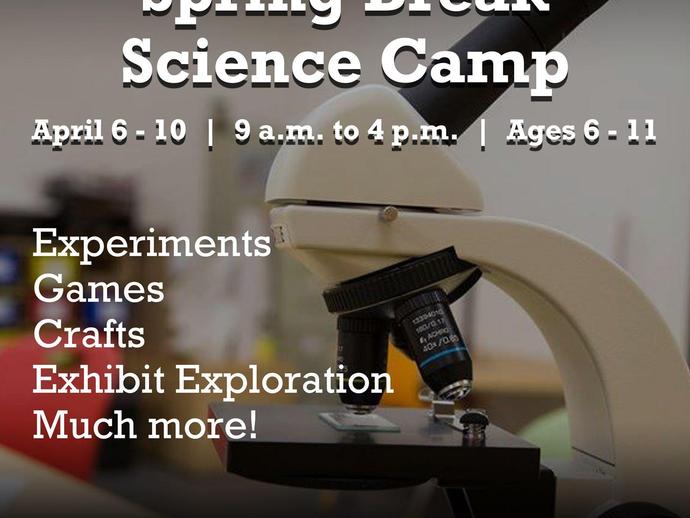
Looking to keep your children busy over Spring Break? We've got you covered!
March 6, 2020
Looking to keep your children busy over Spring Break? We've got you covered! Learn more at Spring Break Science Camp!
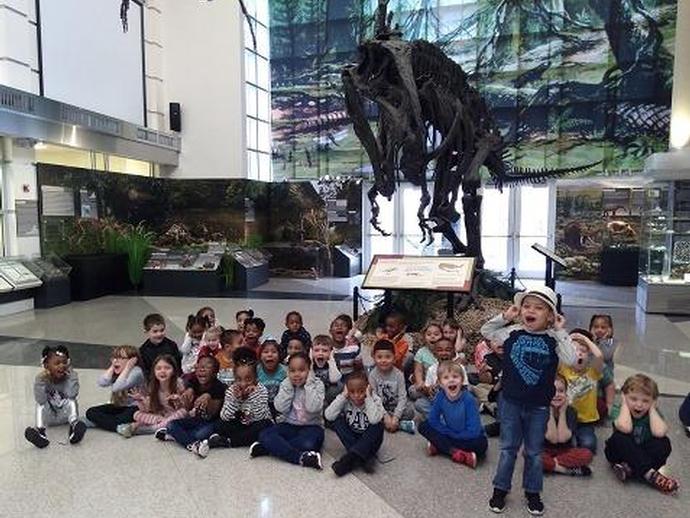
Dozens of kindergateners from Rich Acres Elementary School descended upon the museum today for a ...
March 5, 2020
Dozens of kindergateners from Rich Acres Elementary School descended upon the museum today for a guided tour of the exhibit galleries and to participate in the special educational program "Marvelous Magnets"! Before they left, the students gathered in front of the Acrocanthosaurus for a farewell group photo!
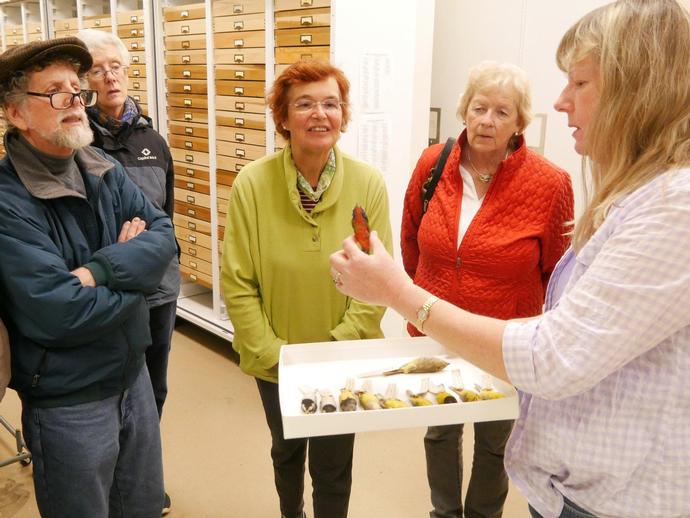
Virginia Museum of Natural History Curator of Mammalogy Dr
March 4, 2020
Virginia Museum of Natural History Curator of Mammalogy Dr. Nancy Moncrief gave a behind-the-scenes tour on Tuesday to members of the Margaret Watson Bird Club of Farmville and the Central Piedmont Master Naturalists! The group members were particularly interested in seeing the collection of bird skins housed at the museum, and Dr. Moncrief showed them a variety of interesting specimens, most of them more than 100 years old.
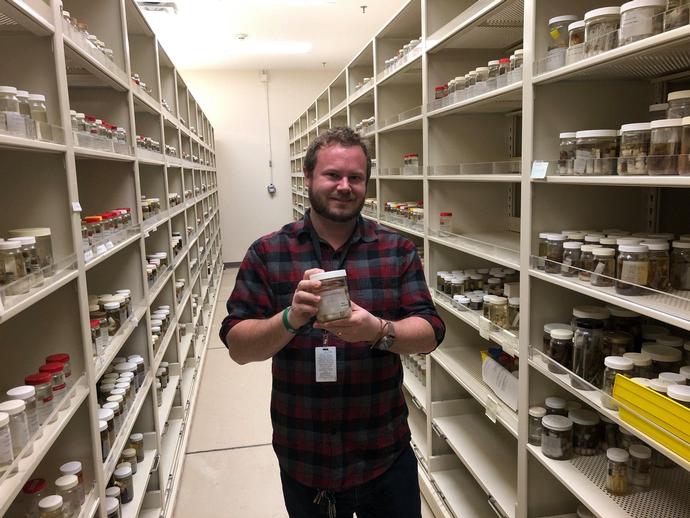
Through the rest of the year, Dr
March 2, 2020
Through the rest of the year, Dr. Jackson Means will be serving as a Collections Assistant at the Virginia Museum of Natural History. Dr. Means, who received his Ph.D. in Entomology from Virginia Tech, will be using his knowledge of myriapods (the subphylum that contains millipedes and centipedes, among others) to curate and update the museum's vast millipede collection, which was largely built by the late Dr. Richard Hoffman. Welcome aboard, Jackson!
Archives
2025
2024
2023
2022
2021
2020
2019
2018
2017
2016
2015
2014
2013
2012
2011
2010
2009
2008

Please Visit Us Soon
Hours:
Tuesday - Saturday: 10am - 4pm
Sunday: Noon to 4pm (Memorial Day Weekend through Labor Day Weekend only)
Monday: Closed
Admission:
$12 for ages 18-59
$6 for ages 3-17, seniors 60+, and college students
FREE for children under 3, museum members, members of ASTC Passport participating institutions, and EBT cardholders
My 4 year old son loves going to the museum. The exhibits are educational, interactive and kid-friendly.
”

 Hours & Admissions
Hours & Admissions Directions
Directions